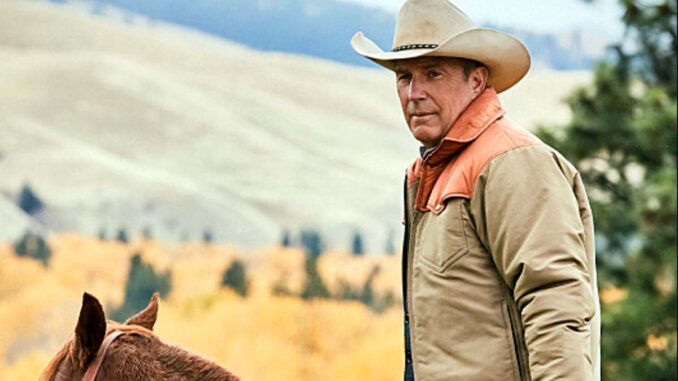
The Unfurling Tapestry: Why Yellowstone’s End is Just the Beginning
The news that Taylor Sheridan’s juggernaut, Yellowstone, is riding off into the sunset can feel, for many fans, like the end of an era – a poignant farewell to the golden fields, the fraught family dynamics, and the visceral struggle for a way of life that has captivated millions. Yet, to view it as simply an end is to miss the grand design unfolding before our eyes. The conclusion of the main series is not a death knell but a strategic pivot, an elegant shedding of its skin to reveal a vast, intricate ecosystem. The Yellowstone universe isn’t merely expanding; it’s unfurling, stretching its roots and branches across time and territory, transforming a beloved show into a sprawling American epic, a modern mythology ready to be explored in every direction.
At its core, Yellowstone struck a nerve because it was more than just a contemporary Western; it was a meditation on legacy, land, and the often-brutal cost of holding onto both. The Dutton family, flawed and fierce, became a modern-day American aristocracy, their ranch a kingdom under siege. This foundational narrative, however, was always anchored to a deeper, richer history. Sheridan, with a keen eye for the primal struggles of the American past, understood that the present-day drama of John Dutton was merely one thread in a much larger tapestry. The demand for more of this world wasn’t just about the charismatic anti-heroes; it was about the very soul of the land they fought for, and the generations who bled for it.
This inherent depth found its first, stunning articulation in 1883. More than a prequel, it was a visceral origin story, a harrowing odyssey across the unforgiving plains that laid bare the sacrifice and grit required to forge the Dutton legacy. We didn’t just see the family; we experienced the bone-wearying trek, the desperate hopes, and the crushing losses that cemented their claim to the land. 1883 illustrated that the Yellowstone universe wasn’t confined to Montana or even to the modern era; its power lay in its ability to transport us to pivotal moments in American history, showing how the present was irrevocably shaped by the struggles of the past. It wasn’t just a show about cowboys; it was a show about pioneers, about the very act of nation-building through individual suffering.
Following this, 1923 further solidified the universe’s historical breadth, placing a new generation of Duttons against the backdrop of the Great Depression, Prohibition, and the lingering scars of World War I. Harrison Ford and Helen Mirren brought a gravitas that perfectly conveyed the enduring hardship and resilience of the family. Here, the expansion wasn’t just about telling a different story; it was about showing the continuity of the struggle. The themes of land, survival, and the clash of cultures remained, but they were filtered through the specific socioeconomic and political pressures of a bygone era. Each historical spin-off acts as a deep dive into a specific chapter of the Dutton saga, enriching our understanding of their unbreakable bond to the land and the often-bloody price of their heritage.
And the universe continues to unfurl, not just backward in time, but laterally and forward. The much-anticipated 6666, set on the famed Four Sixes Ranch in Texas, promises to explore a different facet of the Western experience, a sprawling, working ranch steeped in its own traditions and challenges. This isn’t just a geographical shift; it’s a thematic expansion, exploring a different kind of cowboy, a different brand of land stewardship, yet still anchored by the same foundational principles of honor, hard work, and loyalty that define the Yellowstone ethos. Furthermore, the announced sequel series, featuring Matthew McConaughey and set to carry the torch from the main Yellowstone narrative, promises to bridge the gap and usher the Dutton story into a new era, proving that the family’s journey is far from over, even if its patriarch steps aside.
The expansion of the Yellowstone universe, therefore, isn’t a mere commercial ploy but a sophisticated act of serialized storytelling. It recognizes that the narrative well Taylor Sheridan tapped into is far deeper than a single show could contain. It’s an illustrative example of how a singular vision can bloom into a multi-faceted epic, offering viewers not just more content, but a richer, more comprehensive understanding of a world they’ve come to love. As the main show concludes, it doesn’t mark an end, but a glorious broadening of horizons, inviting us to traverse the vast, complex, and eternally compelling landscape of the Duttons’ enduring American dream. The tapestry is still being woven, thread by vivid thread, and its most compelling chapters may yet lie ahead.
